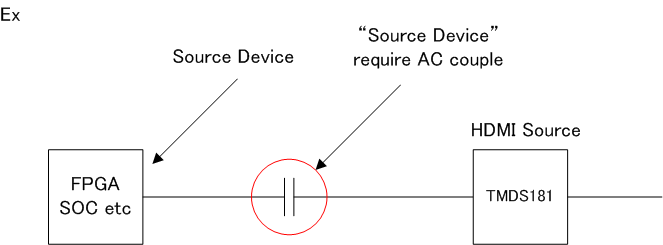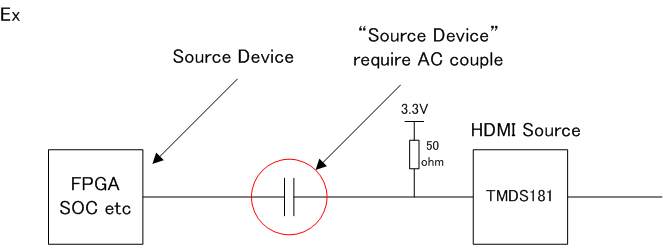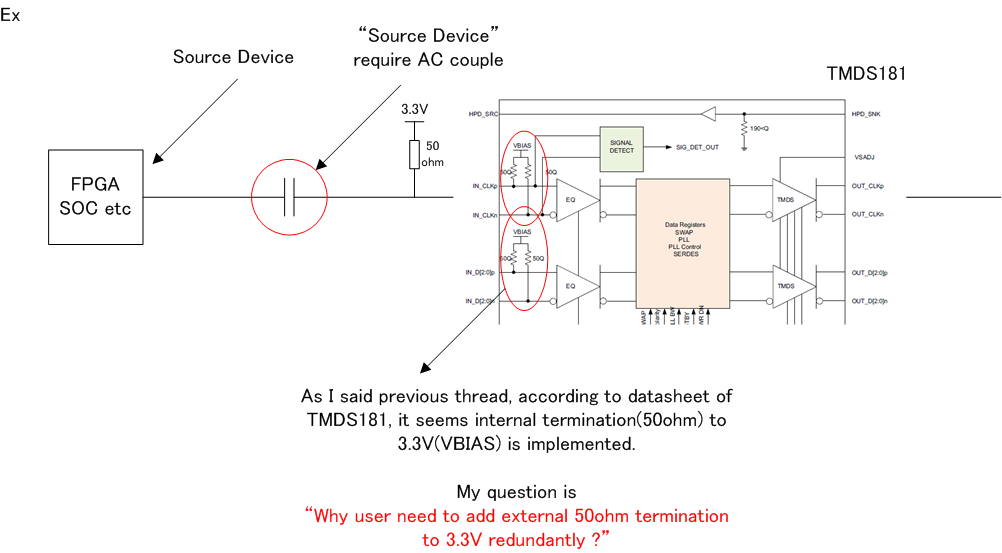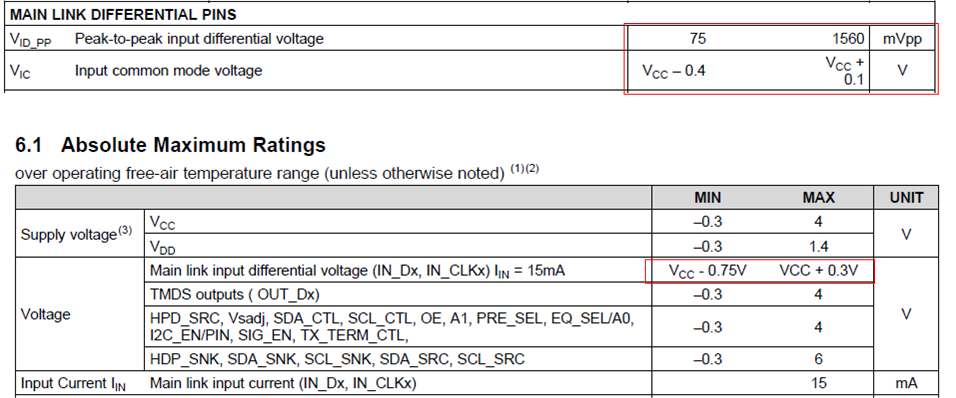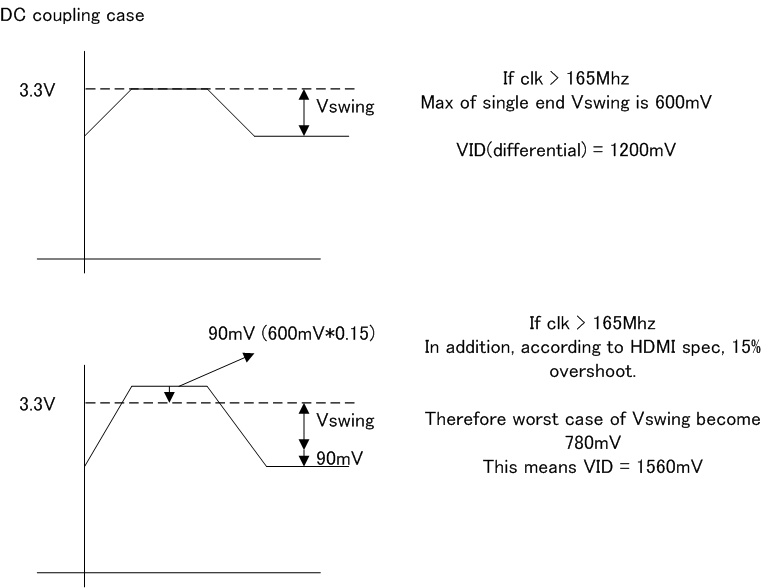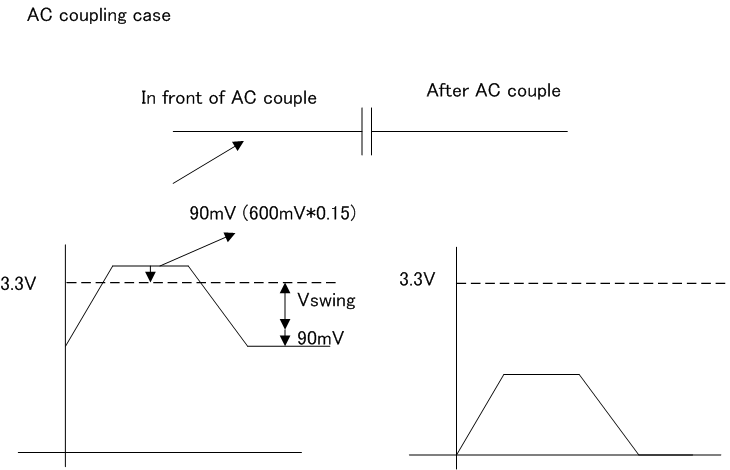Other Parts Discussed in Thread: TMDS171
Hello,
Let me confirm about below.
* Why TI recommend to use DP159 and DP149 when AC coupling is required on TMDS input line ?
(I referred following video.)
https://training.ti.com/jp/enhancing-system-performance-signal-conditioners
According to datasheet of TMDS171 and TMDS181 also have VBIAS(3.3V).
Actually, VBIAS voltage is different b/w TMDS1x1 and DP1x9, however, both have bias voltage inside device.
So, it seems that both series can accept AC coupling on TMDS input line.
So could you please confirm why TI said that only DP1x9 should be used for AC coupling requirement ?
Best Regards


